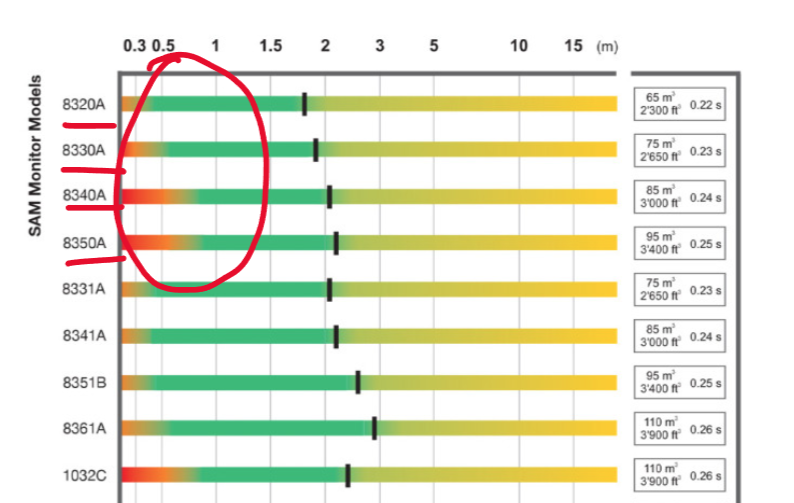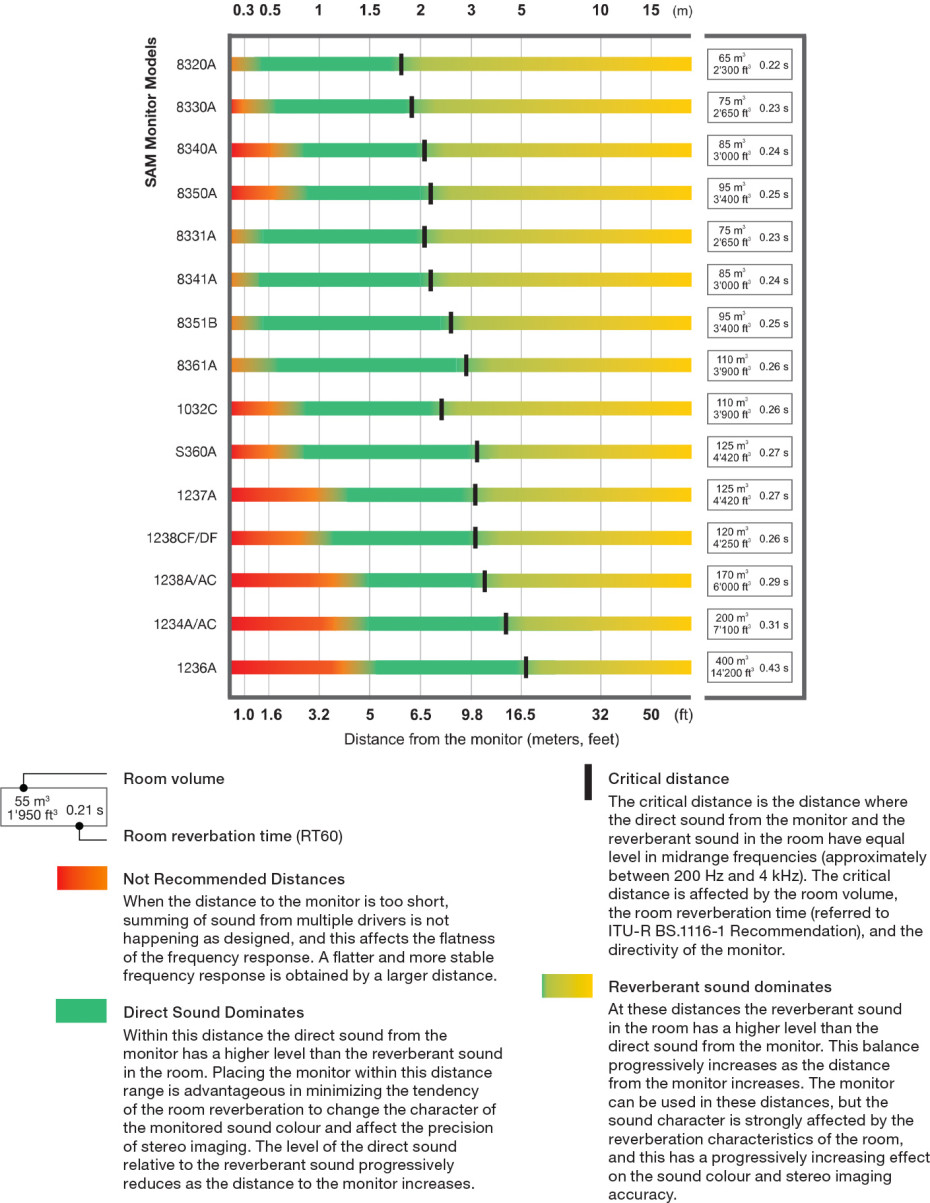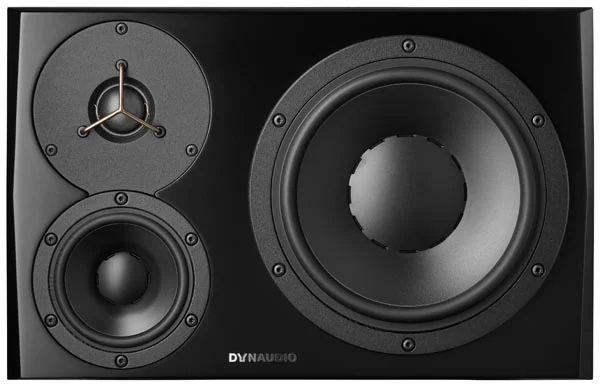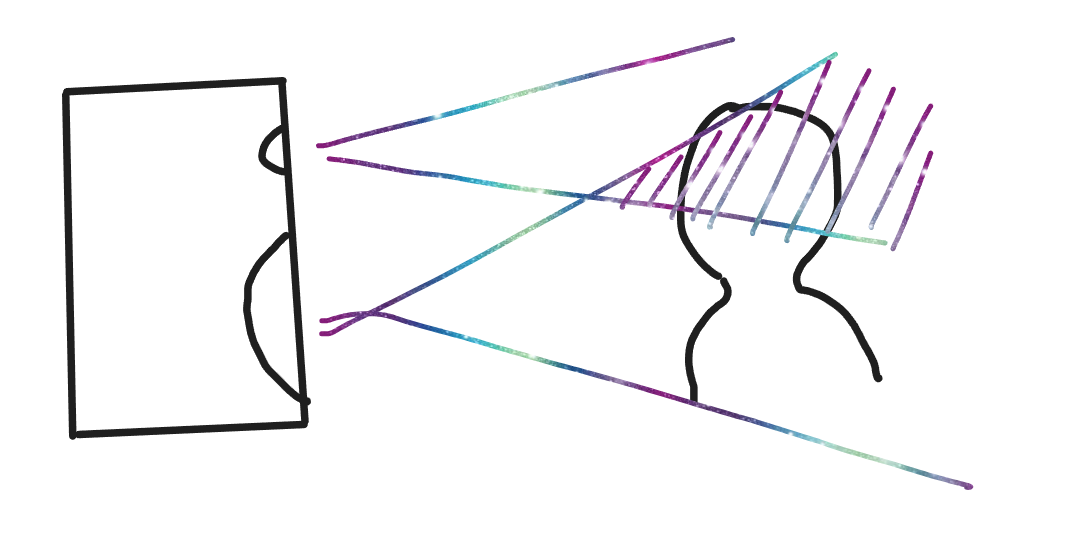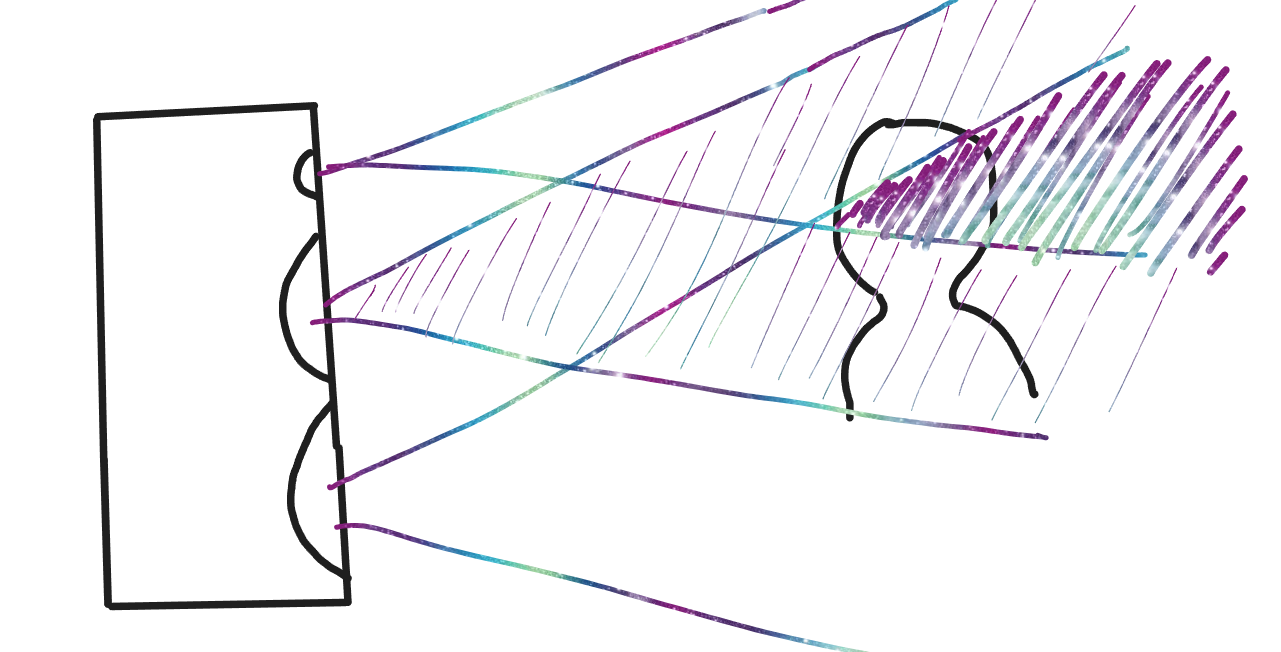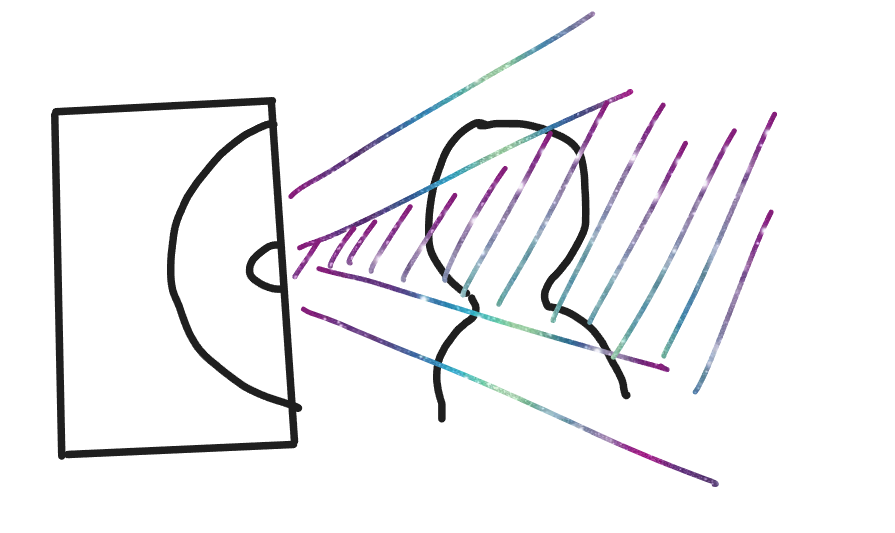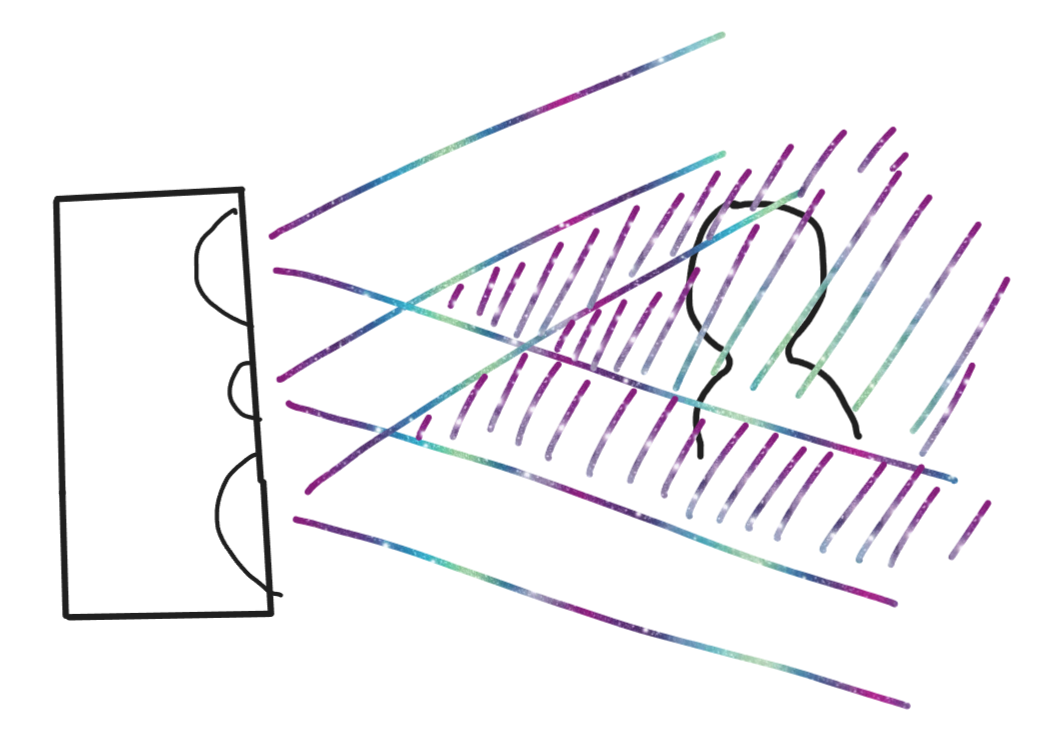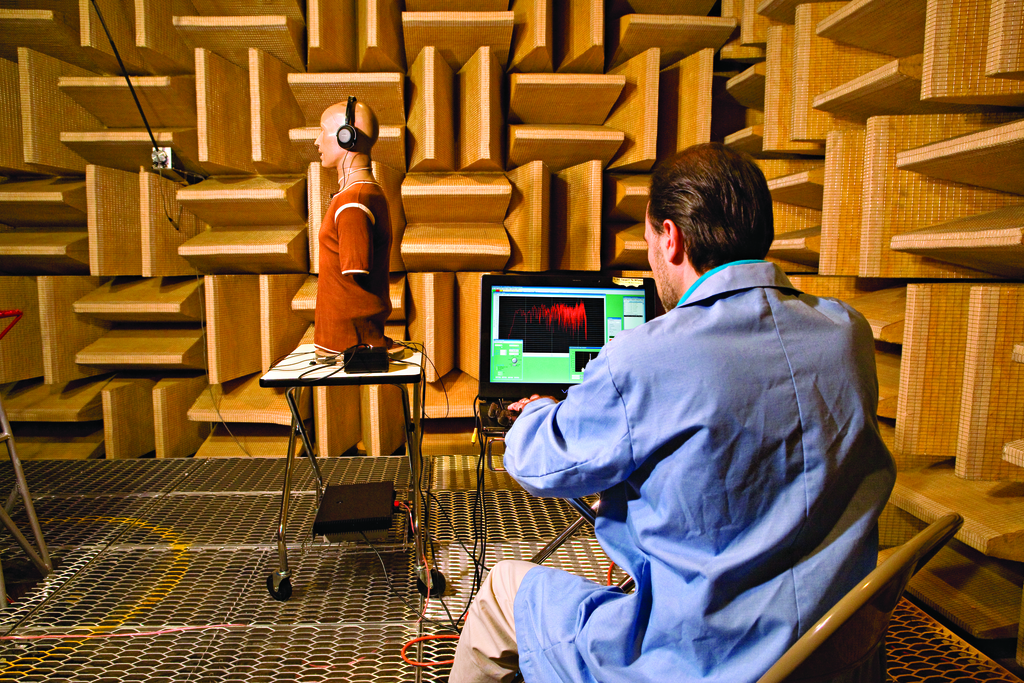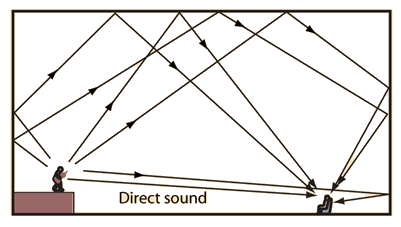[공지]글 작성 및 수정 방법
문서의 이전 판입니다!
목차
음향 공간
Acoustic field
니어필드
근거리장
니어필드는 음향 공간에서 사용되는 개념으로, 스피커와 청취자 사이의 상대적으로 가까운 거리에서 오디오 신호를 듣는 것을 의미합니다. 니어필드 모니터링은 음향 엔지니어나 음악 제작자가 음악 믹스, 마스터링 또는 녹음 작업을 할 때 가장 일반적으로 사용하는 방식 중 하나입니다.
니어필드 모니터링 시스템은 스튜디오에서 작업할 때 청취자와 스피커 사이의 거리를 최소화함으로써 목표하는 효과를 달성합니다. 이를 통해 음악 제작자는 더 정확하고 직접적인 사운드를 들을 수 있으며, 스피커와 청취자 사이의 짧은 거리로 인해 반사음이나 간섭이 적어집니다.
니어필드 모니터링 시스템은 일반적으로 작은 크기의 스피커를 사용하며, 작업 공간의 특정 위치에 배치됩니다. 일반적으로 스피커는 작업 테이블 위에 위치하고, 청취자는 스피커와 동일한 수평선 상에 위치하며 작업을 수행합니다.
니어필드 모니터링은 믹싱 및 마스터링 작업을 포함한 오디오 작업의 정확성과 세부 사운드를 평가하기 위해 사용됩니다. 청취자가 스피커에 가까이 위치하여 음악의 세부 사운드, 믹싱 밸런스, 스테레오 이미지 등을 정확하게 평가하고 조정할 수 있습니다. 이를 통해 고음질의 오디오 작업을 위해 보다 정확하고 명확한 청취 환경을 제공합니다.
near field
near field is an acoustic concept referring to the practice of listening to audio signals at a relatively close distance between speakers and the listener. near field monitoring is one of the most commonly used methods by audio engineers and music producers when working on tasks such as music mixing, mastering, or recording.
near field monitoring systems achieve their intended effect in a studio environment by minimizing the distance between the listener and the speakers. This allows music producers to hear a more accurate and direct sound, with reduced reflections and interference due to the short distance between the speakers and the listener.
near field monitoring systems typically employ smaller-sized speakers and position them in specific locations within the workspace. Often, the speakers are placed on the worktable, and the listener is positioned on the same horizontal line as the speakers while conducting their work.
near field monitoring is used to assess the precision and intricate details of audio work, including mixing and mastering. By having the listener in close proximity to the speakers, they can accurately evaluate and adjust aspects such as the fine details of sound, mixing balance, stereo imaging, and more. This approach provides a more precise and clear listening environment, contributing to high-quality audio production.
Reference
니어필드 모니터링
니어필드 모니터링은 오디오 엔지니어링 및 믹싱에서 사용되는 개념으로, 모니터 스피커를 가까이에 위치시켜 소리를 더 가깝게 청취하는 방법입니다. 이것은 음원을 원본 음향 신호에 가깝게 듣는 것을 목표로 하며, 주로 공간적인 반향과 방해의 영향을 최소화하기 위해 사용됩니다.
니어필드 모니터링을 사용할 때, 오디오 엔지니어나 프로듀서는 모니터 스피커를 믹싱 콘솔이나 작업 장소에 가깝게 배치합니다. 이렇게 하면 소리가 스피커에서 직접 들리는 것이 더 많아지고, 공간적인 반향과 잔향을 줄이는 데 도움이 됩니다. 따라서 룸 모드와 같은 방해 요소를 최소화하고 더 정확한 음향 신호를 청취할 수 있습니다.
니어필드 모니터링은 주로 스튜디오나 믹싱 환경에서 사용되며, 파필드 모니터 스피커와 함께 사용하여 정확한 믹싱과 마스터링을 위한 중요한 도구 중 하나입니다. 이를 통해 오디오 엔지니어는 믹스의 세부 사항을 더 잘 듣고 조절할 수 있습니다.
Near field monitoring
near field monitoring is a concept used in audio engineering and mixing, where monitor speakers are positioned close to the listener for a more intimate listening experience. The goal is to hear the audio source as close to the original sound signal as possible, primarily to minimize spatial reflections and interference.
When using near field monitoring, audio engineers or producers place monitor speakers in close proximity to the mixing console or workstation. This approach increases the direct sound from the speakers and helps reduce spatial reflections and reverberations, minimizing disruptive factors like room modes. Consequently, it allows for more accurate listening of the audio signal.
near field monitoring is commonly employed in studio or mixing environments and is often used alongside studio monitors to serve as a crucial tool for precise mixing and mastering. Through near field monitoring, audio engineers can better perceive and adjust the finer details of their mixes.
니어필드 모니터 스피커
니어필드 모니터 스피커는 최소 청취거리가 짧아서 매우 가까이에서도 들을 수 있어야 합니다. 이러한 스피커는 일반적으로 1미터(약 3피트) 이내에서 사용됩니다. 이것은 오디오 엔지니어나 믹싱 작업자가 작업 장소의 스튜디오 모니터 스피커를 아주 가까이에서 듣는 것을 의미합니다.
가까운 청취거리에서 스피커를 사용하는 이유는 다음과 같습니다:
1. 정확한 음원 모니터링: 가까이에서 스피커를 듣는 것은 원본 음원의 작은 세부 사항까지 정확하게 들을 수 있도록 도와줍니다. 이것은 믹싱 및 마스터링 작업에서 중요한 역할을 합니다.
2. 음원의 직접음 청취: 가까운 거리에서 스피커를 들으면 음원의 직접음 청취가 가능하므로, 스튜디오 환경에서 발생하는 다양한 소리나 반향이 최소화됩니다.
3. 소리의 집중: 가까이에서 스피커를 듣면 다른 소음이나 환경 소리로 인한 간섭이 줄어들어 음원을 더 집중적으로 청취할 수 있습니다.
그러므로 니어필드 모니터링 스피커는 오디오 작업 환경에서 정확한 청취와 믹싱을 위해 매우 가까이에서 사용되며, 이를 통해 음악 프로듀서나 오디오 엔지니어는 음원의 세부 사항을 놓치지 않고 조절할 수 있습니다.
6.5인치 우퍼를 가진 8340 이나 8인치 우퍼를 가진 8350 은 0.5m ~ 1m의 청취거리에서는 니어필드 모니터링이 불가능 할 수 있다. 니어필드 모니터링을 위해 최소한 1m 이상 떨어져서 모니터링 해야한다.1) 동축 스피커 모델들은 그에 비해 최소 청취거리가 짧게 나올 수 있기 때문에, 아주 가까운 위치에서도 니어필드 모니터링이 가능하다. 많은 사람들이 저역대 모니터링을 위해 우퍼의 인치수를 8인치 이상급으로 추천하는 경향이 있는데 이것은 매우 잘못된 추천이다. 저역대 모니터링을 위해서는 모니터 스피커의 인치수를 크게 가져가는 것보다 따로 서브우퍼를 사용하는 것이 훨씬 도움이 된다.
청취거리
스피커의 제대로 된 소리를 듣기 위한 범위는 스피커 디자인 유형이나 룸 어커스틱에 따라 달라질 수 있다.
니어필드 모니터링에서 최적의 청취거리 범위2)는 스피커의 최소 청취거리부터 크리티컬 디스턴스까지이다. 크리티컬 디스턴스의 경우는 룸 모드와 RT60에 의해 영향을 받기 때문에 공간의 사이즈와 룸 어커스틱의 정도에 따라 달라질 수 있으나, 최소 청취거리의 경우는 스피커 디자인에 따라 정해진다.
스피커 디자인에 의한 최소 청취거리
스피커 유닛들 사이의 거리에 의해서 스피커에 너무 가까운 곳에서는 각각 음역대의 음상이 합쳐지지 않는 구간이 존재한다. 스피커 유닛 간 거리가 가까우면 가까울 수록 최소 청취거리는 짧아진다.
그래서 니어필드 전용으로 설계되는 모니터 스피커의 경우에는 우퍼 유닛의 사이즈를 5~6인치로 제한하여 유닛 간 거리를 최소화하여 최소 청취거리를 확보하는데 힘을 기울인다.
일반적인 우퍼 유닛사이즈 대비 최소 청취거리
정확히는 우퍼 사이즈와 최소 청취거리는 연관성이 없지만, 우퍼 사이즈가 작으면 우퍼와 트위터 간의 거리를 짧게 설계 가능하기 때문에 최소 청취거리가 줄어들게 된다.
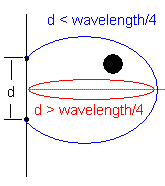 로빙 에러가 발생하지 않는 우퍼와 트위터간의 최적의 간격은 크로스오버 주파수의 파장의 1/4 이하이다.3) 동축유닛의 경우는 유닛간 간격이 0 이므로 최소 청취거리도 극단적으로 짧아지게 된다.
로빙 에러가 발생하지 않는 우퍼와 트위터간의 최적의 간격은 크로스오버 주파수의 파장의 1/4 이하이다.3) 동축유닛의 경우는 유닛간 간격이 0 이므로 최소 청취거리도 극단적으로 짧아지게 된다.
트위터, 미드레인지, 우퍼로 구성되는 3-way 스피커의 경우에는 트위터와 우퍼 사이의 거리가 가깝기가 매우 어렵다. 그래서 3-way는 최소 청취거리를 줄이기 위하여 아래와 같은 형태를 가지기도 한다.
2-Way 스피커 최소 청취거리
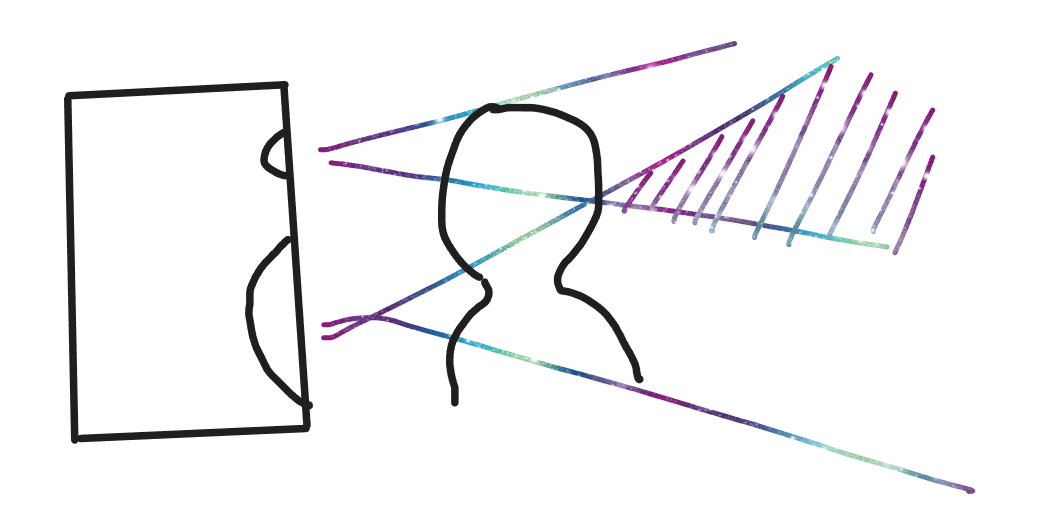
트위터와 우퍼의 음상이 합쳐지지 않는 안쪽 구간에서는 트위터와 우퍼의 위상 차이에 의해 전혀 다른 소리를 들을 수 있다. 고개를 조금만 돌리거나 머리 위치가 살짝만 바뀌어도 밸런스가 달라진 소리를 듣게 된다.
3-Way 스피커 최소 청취거리
동축 스피커 최소 청취거리
MTM, 2.5-way 스피커 최소 청취거리
Reference
크리티컬 디스턴스
크리티컬 디스턴스는 음향학에서 중요한 개념 중 하나로, 음원과 청취자(또는 마이크) 사이의 거리를 나타냅니다. 이 거리는 음원에서 발생한 소리의 진행 방향, 음원의 성질, 환경의 반사 등 다양한 요소에 영향을 받습니다.
주로 크리티컬 디스턴스는 두 가지 영역으로 나뉩니다:
크리티컬 디스턴스의 정확한 값은 환경과 상황에 따라 다르며, 일반적으로 음원과 청취자 사이의 거리가 일정한 값 이상 커지면 원음의 정확도가 감소하고, 환경 반사음이 더 많은 영향을 미치게 됩니다. 크리티컬 디스턴스 이후에는 음향 공간의 특성, 마이크 또는 청취자의 위치 등을 고려하여 적절한 음향 처리나 조정이 필요할 수 있습니다.
크리티컬 디스턴스는 스피커나 청취환경에만 적용되는 것이 아니고, 마이크를 통해 소리를 녹음할 때에도 적용되는 개념입니다. 원음의 발원지와 마이크가 크리티컬 디스턴스보다 안쪽에 있다면 마이크를 통해 녹음되는 소리는 직접음 위주로 녹음되며, 마이크가 크리티컬 디스턴스 바깥쪽에 있다면 마이크를 통해 녹음되는 소리는 공간의 음향 특성에 따라 반사음이 섞여있는 소리로 녹음됩니다.
크리티컬 디스턴스를 이해하면 오디오 엔지니어나 음향 엔지니어가 스튜디오 설계, 음향 장비 배치, 라이브 음향 조절 등 다양한 상황에서 음원의 정확한 전달과 공간음향 대한 이해를 도울 수 있습니다.
https://hearingreview.com/hearing-loss/health-wellness/critical-distance
Critical Distance
Critical distance is an important concept in acoustics, representing the distance between the sound source and the listener (or microphone). This distance is influenced by various factors such as the direction of sound propagation from the source, the characteristics of the source itself, and the reflective properties of the environment.
Critical distance is typically divided into two main regions:
- Direct Sound Region: This is the area where the sound directly reaches the listener or microphone from the source. In this region, the original sound from the source is heard most accurately.
- Reverberant Sound Region: Beyond the direct sound region, the sound emitted from the source reflects off surfaces in the environment before reaching the listener or microphone. In this region, the reflected sound mixes with the original sound, and the quality of the sound varies depending on the acoustic properties of the space.
The precise value of the critical distance varies depending on the environment and circumstances. Generally, when the distance between the source and the listener exceeds a certain value, the accuracy of the original sound decreases, and the influence of environmental reflections becomes more significant. After the critical distance, appropriate acoustic processing or adjustments may be necessary, taking into account factors such as the acoustic characteristics of the space and the positioning of microphones or listeners.
The concept of critical distance applies not only to speakers or listening environments but also to recording situations where sound is captured using microphones. If the microphone is closer to the source than the critical distance, the recorded sound is predominantly direct sound. However, if the microphone is beyond the critical distance, the recorded sound includes reflections according to the acoustic properties of the environment.
Understanding critical distance can assist audio engineers and acousticians in various situations such as studio design, equipment placement, and live sound reinforcement, enabling accurate transmission of sound and enhancing understanding of spatial acoustics.
공식
- d: Critical distance
- V: 방의 체적
즉 방의 체적이 작고, 125Hz에서의 RT60 값이 크다면 크리티컬 디스턴스는 점점 가까워진다.
예시)2x2x2m 사이즈의 골방. 엄청난 베이스트랩 및 흡음 처리로 RT60은 200ms인 상황에서의 크리티컬 디스턴스
Reference
Reference
무향실
자유장의 특성을 구현하기 위해 인위적으로 만든 공간.
장비의 특성을 측정하기 위해 주로 사용된다.
무향실(anechoic chamber)은 주변에서 발생하는 음향 반사를 최소화한 환경으로, 거의 완전히 무향한 상태를 만들어주는 공간입니다. 무향실은 주로 음향 연구, 음향 측정, 제품 테스트 및 개발 등의 목적으로 사용됩니다.
무향실은 음향 신호의 특성을 정확하게 측정하고 분석할 수 있는 환경을 제공합니다. 음향 연구 및 측정을 위해 사용되며, 스피커, 마이크, 음향 장비 등을 테스트하고 특성을 분석하는 데에 활용됩니다. 또한, 음향 신호의 방사 특성, 음향 임펄스 응답, 음향 특성 분석 등을 수행할 수 있습니다.
무향실은 실제 환경에서 발생하는 음향 반사와 간섭을 배제하고, 정확한 음향 측정과 연구를 가능하게 하는 중요한 공간입니다.
https://www.bksv.com/en/Campaign/HQ/M1-newsletters/M1-oct-2020/pressure-field-microphones
Anechoic chamber
An anechoic chamber is an artificially created space designed to replicate the characteristics of a free field. It is primarily used for measuring the properties of equipment.
An anechoic chamber is an environment that minimizes acoustic reflections originating from the surroundings, creating a nearly entirely sound-absorbing state. Anechoic chambers are mainly utilized for purposes such as acoustic research, sound measurements, product testing, and development.
These chambers offer an environment where the characteristics of acoustic signals can be precisely measured and analyzed. They are employed for acoustic research and measurement, allowing for testing and analysis of components like speakers, microphones, and acoustic equipment. Moreover, they enable the investigation of aspects such as sound radiation characteristics, acoustic impulse responses, and acoustic feature analysis.
Anechoic chambers are vital spaces that exclude acoustic reflections and interference encountered in real-world environments, facilitating accurate acoustic measurements and research.
자유장
자유장은 음향 경로를 방해할 수 있는 장애물이 없이 음파가 전달될 수 있는 영역을 말한다.
이론적, 물리적으로 이상적인 상태의 공간을 말한다.
우리가 일반적으로 마이크로폰이나 스피커를 테스트 하는 무향실은 이 자유장에 근접하게 만들어진 공간을 사용하게 된다.
자유장은 주변에 장애물이 없는 개방된 공간을 의미합니다. 음향학에서 자유장은 음파가 자유롭게 전파될 수 있는 상태를 말하며, 주변에 벽면이나 장애물이 없어서 음파의 반사나 간섭이 없는 상태입니다.
자유장은 일반적으로 야외 환경이나 충분히 넓은 실내 공간에서 실현됩니다. 주변에 벽이나 바닥, 천장과 같은 반사면이 없기 때문에 음파는 주변에 자유롭게 퍼지게 됩니다.
자유장은 음향 측정 및 연구에 있어서 중요한 개념입니다. 이는 음향 장비나 시스템의 성능을 정확하게 평가하고, 음향 특성을 측정하고 분석하는 데 사용됩니다. 예를 들어, 스피커의 주변에서 충분한 자유장을 확보하고 마이크를 적절히 배치하여 스피커의 출력 신호를 정확하게 측정할 수 있습니다.
자유장은 음향학 연구뿐만 아니라 음악 제작, 방송, 라이브 공연 등 다양한 음향 환경에서 중요한 개념으로 활용됩니다. 자유장에서는 음파의 전파 특성과 속성을 정확하게 이해하고, 이를 기반으로 음향 시스템의 설계와 조정을 수행할 수 있습니다.
https://www.bksv.com/en/Campaign/HQ/M1-newsletters/M1-oct-2020/pressure-field-microphones
Free-field
Free field refers to an area where sound waves can propagate without any obstacles obstructing the sound path.
It denotes an idealized state, both theoretically and physically.
In practical terms, anechoic chambers, commonly used to test microphones and speakers, aim to approximate this free field condition.
A free field is a space that is free from obstacles or obstructions in its vicinity. In acoustics, it signifies a state in which sound waves can propagate freely without any reflections or interference, as there are no walls or obstacles in the vicinity.
Free fields are typically realized in outdoor environments or sufficiently large indoor spaces. Due to the absence of reflecting surfaces such as walls, floors, or ceilings, sound waves propagate freely throughout the space.
The concept of a free field is crucial in acoustics, as it is employed in accurately assessing the performance of acoustic equipment or systems and in measuring and analyzing acoustic characteristics. For instance, ensuring an adequate free field around speakers and appropriately placing microphones allows for precise measurements of speaker output signals.
The concept of a free field is not only relevant in acoustical research but also finds applications in various sound environments, including music production, broadcasting, live performances, and more. In a free field, a comprehensive understanding of sound wave propagation characteristics serves as a foundation for designing and tuning acoustic systems.
잔향
잔향은 강당과 같은 공간 내 표면에서 반사된 소리의 모음입니다. 잔향은 강당에서의 소리 크기가 역제곱 법칙에 의한 줄어드는 것을 극복하는 데 도움이 되는 만큼 강당에서 도움이 되는 특성입니다. 그러나 지나치게 많으면 소리가 함께 뒤섞여 발음이 더욱 불분명하고 음질이 탁탁하게 들립니다. 잔향을 정량화하기 위해 잔향 시간(RT)이라는 파라미터를 사용합니다.
Reverberation
Reverberation is the collection of reflected sounds from the surfaces in an enclosure like an auditorium. It is a desirable property of auditoriums to the extent that it helps to overcome the inverse square law dropoff of sound intensity in the enclosure. However, if it is excessive, it makes the sounds run together with loss of articulation - the sound becomes muddy, garbled. To quantitatively characterize the reverberation, the paramater called the reverberation time is used.
Reference
크리티컬 디스턴스
크리티컬 디스턴스는 음향학에서 중요한 개념 중 하나로, 음원과 청취자(또는 마이크) 사이의 거리를 나타냅니다. 이 거리는 음원에서 발생한 소리의 진행 방향, 음원의 성질, 환경의 반사 등 다양한 요소에 영향을 받습니다.
주로 크리티컬 디스턴스는 두 가지 영역으로 나뉩니다:
크리티컬 디스턴스의 정확한 값은 환경과 상황에 따라 다르며, 일반적으로 음원과 청취자 사이의 거리가 일정한 값 이상 커지면 원음의 정확도가 감소하고, 환경 반사음이 더 많은 영향을 미치게 됩니다. 크리티컬 디스턴스 이후에는 음향 공간의 특성, 마이크 또는 청취자의 위치 등을 고려하여 적절한 음향 처리나 조정이 필요할 수 있습니다.
크리티컬 디스턴스는 스피커나 청취환경에만 적용되는 것이 아니고, 마이크를 통해 소리를 녹음할 때에도 적용되는 개념입니다. 원음의 발원지와 마이크가 크리티컬 디스턴스보다 안쪽에 있다면 마이크를 통해 녹음되는 소리는 직접음 위주로 녹음되며, 마이크가 크리티컬 디스턴스 바깥쪽에 있다면 마이크를 통해 녹음되는 소리는 공간의 음향 특성에 따라 반사음이 섞여있는 소리로 녹음됩니다.
크리티컬 디스턴스를 이해하면 오디오 엔지니어나 음향 엔지니어가 스튜디오 설계, 음향 장비 배치, 라이브 음향 조절 등 다양한 상황에서 음원의 정확한 전달과 공간음향 대한 이해를 도울 수 있습니다.
https://hearingreview.com/hearing-loss/health-wellness/critical-distance
Critical Distance
Critical distance is an important concept in acoustics, representing the distance between the sound source and the listener (or microphone). This distance is influenced by various factors such as the direction of sound propagation from the source, the characteristics of the source itself, and the reflective properties of the environment.
Critical distance is typically divided into two main regions:
- Direct Sound Region: This is the area where the sound directly reaches the listener or microphone from the source. In this region, the original sound from the source is heard most accurately.
- Reverberant Sound Region: Beyond the direct sound region, the sound emitted from the source reflects off surfaces in the environment before reaching the listener or microphone. In this region, the reflected sound mixes with the original sound, and the quality of the sound varies depending on the acoustic properties of the space.
The precise value of the critical distance varies depending on the environment and circumstances. Generally, when the distance between the source and the listener exceeds a certain value, the accuracy of the original sound decreases, and the influence of environmental reflections becomes more significant. After the critical distance, appropriate acoustic processing or adjustments may be necessary, taking into account factors such as the acoustic characteristics of the space and the positioning of microphones or listeners.
The concept of critical distance applies not only to speakers or listening environments but also to recording situations where sound is captured using microphones. If the microphone is closer to the source than the critical distance, the recorded sound is predominantly direct sound. However, if the microphone is beyond the critical distance, the recorded sound includes reflections according to the acoustic properties of the environment.
Understanding critical distance can assist audio engineers and acousticians in various situations such as studio design, equipment placement, and live sound reinforcement, enabling accurate transmission of sound and enhancing understanding of spatial acoustics.
공식
- d: Critical distance
- V: 방의 체적
즉 방의 체적이 작고, 125Hz에서의 RT60 값이 크다면 크리티컬 디스턴스는 점점 가까워진다.
예시)2x2x2m 사이즈의 골방. 엄청난 베이스트랩 및 흡음 처리로 RT60은 200ms인 상황에서의 크리티컬 디스턴스
Reference
파필드
원거리장
파필드는 음향 공간에서 사용되는 개념으로, 스피커와 청취자 사이의 상대적으로 멀리 떨어진 거리에서 오디오 신호를 듣는 것을 의미합니다. 파필드는 주로 공연장, 컨서트 홀, 옥외 이벤트 등 대규모 음향 시스템에서 사용됩니다.
파필드에서는 스피커와 청취자 사이의 거리가 멀기 때문에, 음향 신호는 청취자에게 도달하기 전에 여러 환경적인 요인에 의해 영향을 받을 수 있습니다. 이러한 요인에는 반사음, 간섭, 공간적인 증폭/감쇠 등이 포함될 수 있습니다.
대규모 음향 시스템에서 파필드 모니터링을 위해 스피커는 청취자에서 상당히 멀리 떨어진 위치에 배치됩니다. 이로 인해 오디오 신호는 공간을 횡단하여 청취자에게 도달하게 됩니다. 파필드 모니터링 시스템은 대형 공연장이나 이벤트에서 필요한 음량과 커버리지를 제공하기 위해 설계됩니다.
파필드 모니터링은 음향 시스템 설계, PA 시스템 조정 및 공연장 청음 등에 중요한 역할을 합니다. 파필드에서는 스피커와 청취자 사이의 거리와 주변 환경 등을 고려하여 음향 신호를 조정하고 평가하는 작업을 수행합니다. 이를 통해 공연장 전체에 균일하게 분포된 음향을 제공하고, 멀리 떨어진 청취자들도 명확하게 오디오를 청취할 수 있도록 합니다.
far field
The far field is a concept used in acoustic spaces, referring to the act of listening to audio signals from a relatively distant distance between the speaker and the listener. The far field is primarily used in large-scale audio systems such as auditoriums, concert halls, and outdoor events.
In the far field, due to the relatively long distance between the speaker and the listener, audio signals can be influenced by various environmental factors before reaching the listener. These factors may include reflections, interference, and spatial amplification/attenuation.
In large-scale audio systems, speakers are positioned quite far from the audience for far field monitoring. As a result, audio signals traverse through space before reaching the listeners. far field monitoring systems are designed to provide the necessary volume and coverage for large venues and events.
far field monitoring plays a crucial role in audio system design, PA system tuning, and venue acoustics. In the far field, considerations are made regarding the distance between the speaker and the listener and the surrounding environment to adjust and evaluate audio signals. This ensures the distribution of sound throughout the venue and allows distant listeners to clearly hear the audio.
Reference
확산장
확산장은 자유장이 아닌 공간을 말한다. 확산장은 일반적인 공간처럼 소리가 반사되거나 산란이 되는 공간을 말한다. 따라서 이러한 공간의 특성에 따라 공간의 소리는 고유한 특성을 가지게 된다.
보통 일반적인 공간은 확산장에 속한다고 보면 된다.
리버브 챔버는 이러한 확산장의 특성을 극대화하여 만들어지는 공간이다.
확산장(diffuse field)은 음향학에서 사용되는 개념으로, 음파가 고르게 분산되어 전파되는 상태를 말합니다. 확산장은 주변에 장애물이나 반사면이 있어 음파가 반사되고 임의적으로 분산되는 상태를 의미합니다.
일반적으로 확산장은 방 안의 음파 전파를 모델링하는 데 사용됩니다. 예를 들어, 스피커로부터 방 안에 발생한 음파는 벽면이나 천장과 같은 반사면에서 반사되고, 반사된 음파는 임의적으로 분산됩니다. 이렇게 분산된 음파들이 방 안에서 균일하게 분포되면 확산장이 형성됩니다.
확산장은 일반적으로 방 안의 음향 환경에서 중요한 개념입니다. 음악 제작, 녹음, 음향 설계 등 다양한 분야에서 활용됩니다. 확산장은 음향 신호의 반사, 임펄스 응답, 에코 및 반사 간섭 등을 이해하고 분석하는 데 도움을 줍니다.
특히 스튜디오나 음악 제작 공간에서는 방 안의 음향 확산을 균일하게 조절하는 것이 중요합니다. 이를 위해 음향 처리 장치나 흡음재, 반사판 등이 사용되어 음파의 반사와 분산을 조절하고, 좋은 음향 환경을 조성합니다.
확산장은 음향학 연구와 음향 설계에서 중요한 개념으로 활용되며, 방 안의 음향 환경을 이해하고 최적화하는 데에 큰 역할을 합니다.
https://www.bksv.com/en/Campaign/HQ/M1-newsletters/M1-oct-2020/pressure-field-microphones
diffuse field
A diffuse field refers to a space that is not a free field. In a diffuse field, sound behaves like it does in typical spaces, where sound can be reflected or scattered. Consequently, the acoustic properties of such spaces result in unique sound characteristics.
Generally, ordinary spaces are considered to belong to the category of diffuse fields.
A reverb chamber is a space intentionally designed to maximize the characteristics of such a diffuse field.
A diffuse field is a concept used in acoustics, signifying a state in which sound waves are evenly dispersed and propagated. It describes a condition where sound waves are reflected and randomly scattered due to the presence of obstacles or reflecting surfaces in the surroundings.
Typically, a diffuse field is employed to model sound propagation within enclosed spaces. For instance, sound waves generated within a room, emanating from a speaker, undergo reflections from surfaces such as walls and ceilings, resulting in a random dispersion of these reflected sound waves. When these dispersed sound waves become uniformly distributed within the room, a diffuse field is formed.
The concept of a diffuse field is generally significant in various audio environments, including music production, recording, and acoustic design. It aids in comprehending sound signal reflections, impulse responses, echoes, and reflection interference, among other phenomena.
Particularly in studios and music production spaces, it is crucial to control sound diffusion within a room uniformly. To achieve this, acoustic treatment devices, absorbers, diffusers, and reflective panels are employed to regulate sound wave reflections and dispersion, creating an optimal acoustic environment.
The concept of a diffuse field is instrumental in acoustic research and design, playing a substantial role in understanding and optimizing the acoustic environment within enclosed spaces.
[홈레코딩 필독서]"모두의 홈레코딩"구매링크

